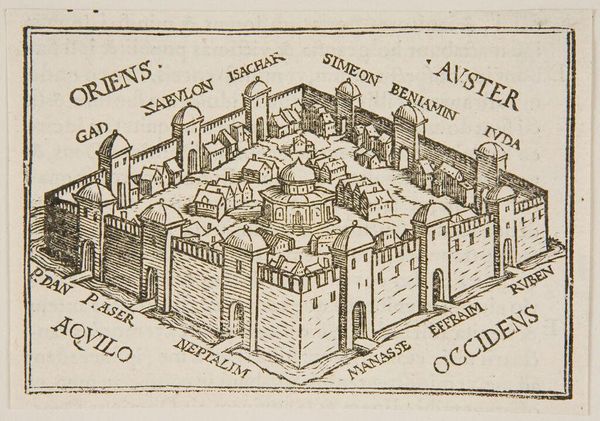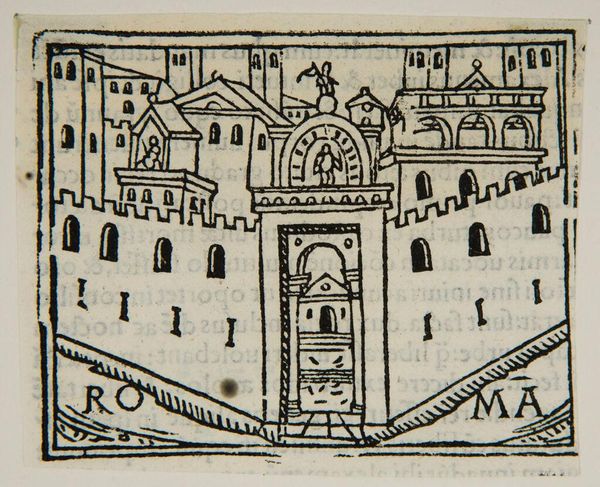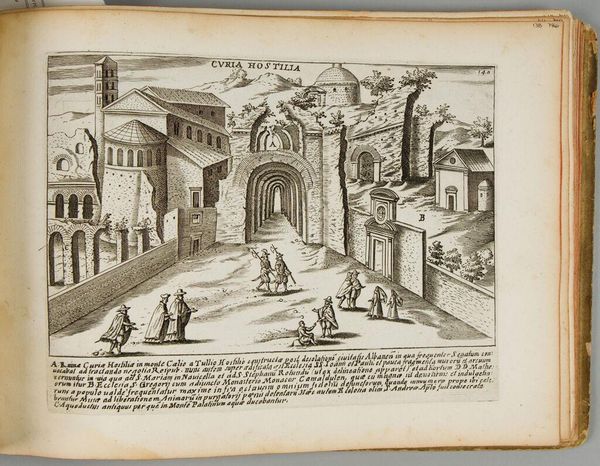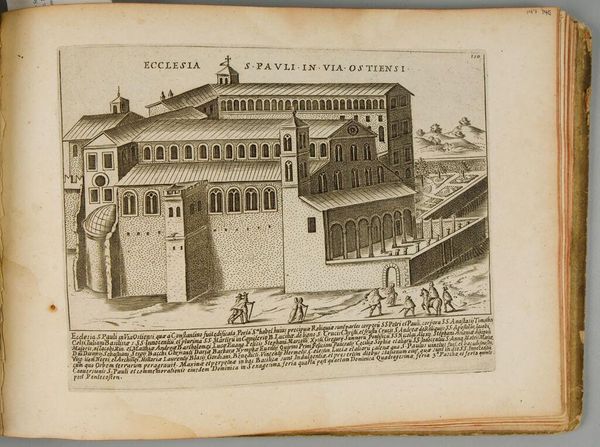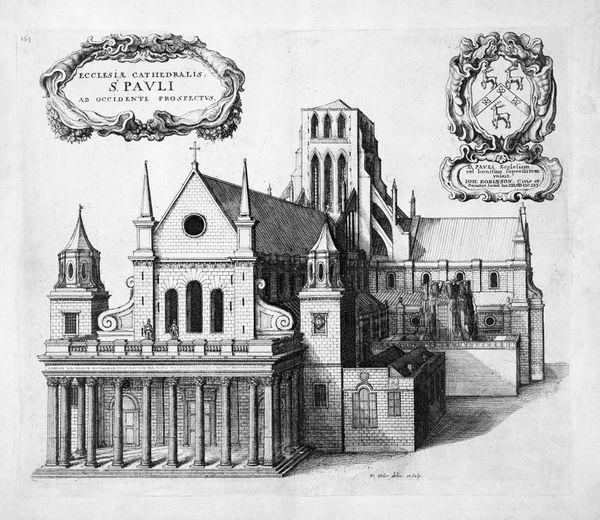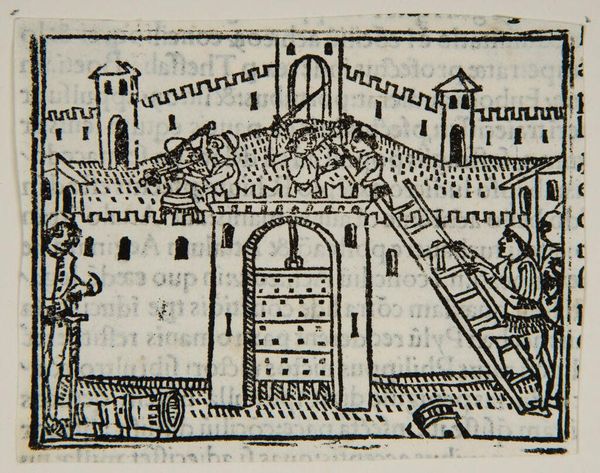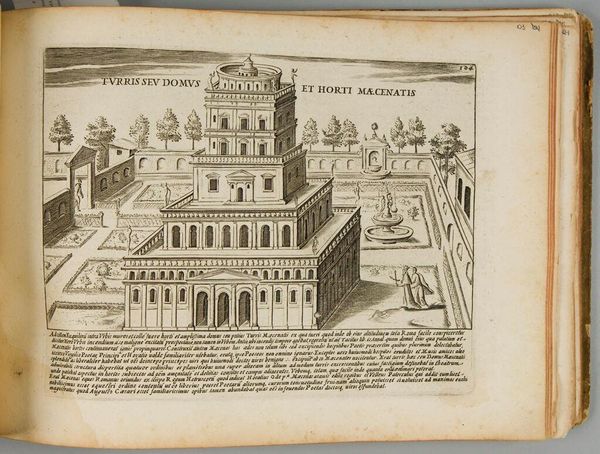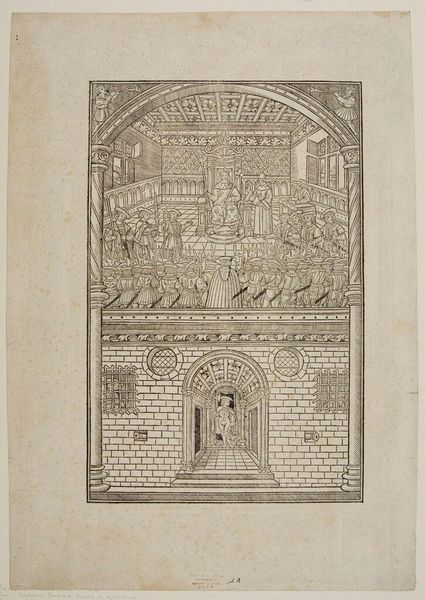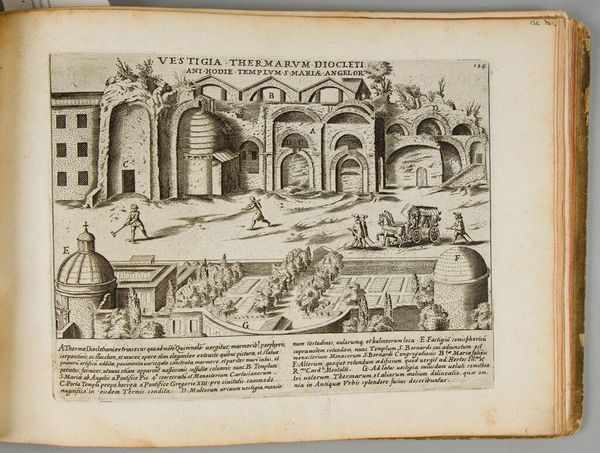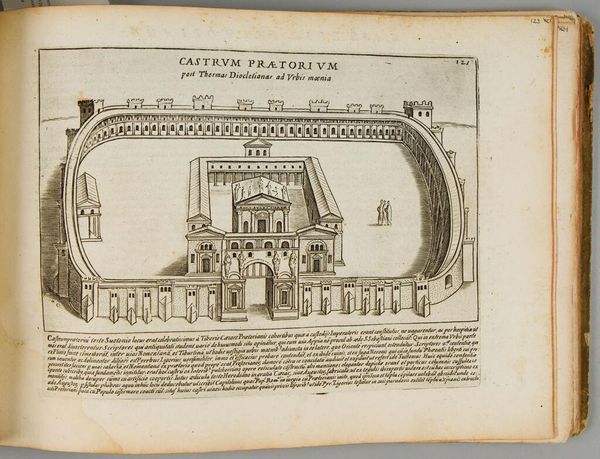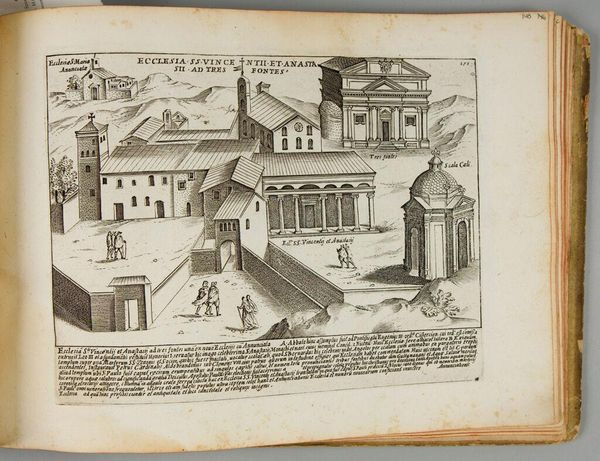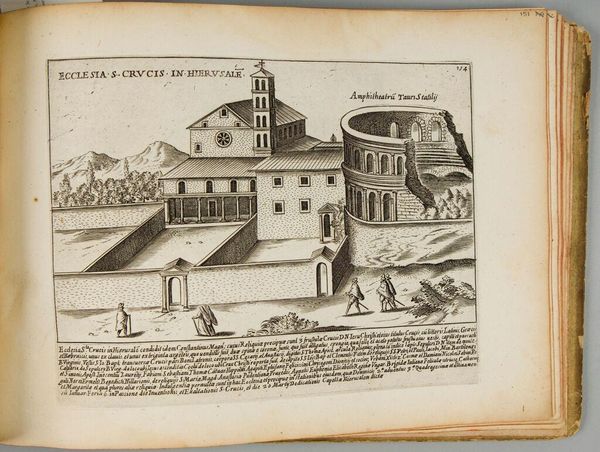
Copyright: CC0 1.0
Curator: Hans Holbein the Younger, who lived from around 1497 to 1543, created this woodcut print, "Ezekiel XL," held at the Harvard Art Museums. Editor: Immediately, I'm struck by the rigid geometry, the stark contrast of black ink on paper giving it an austere feel. Curator: Holbein lived during a period of immense religious and social upheaval. This image, depicting a fortified gate, speaks to the era's anxieties about protection and access. Editor: Absolutely, the choice of woodcut underscores this. The graphic nature and repetitive, almost mechanical lines emphasize the labor involved in its production, and the potential for mass dissemination. Curator: The Latin inscriptions also offer a peek into the artwork's symbolic intent, highlighting altitude and depth of vision, possibly engaging with contemporary ideas about spatial understanding and spiritual enlightenment. Editor: I agree. I also feel this piece invites a discussion around the cultural significance of printmaking during that era, where the process of reproduction was integral to spreading both religious and secular ideologies. Curator: Considering its historical context and Holbein's own personal positioning within the religious conflicts of his time, this work seems to reflect a profound internal and external quest for meaning. Editor: Yes, I see the labor and material speaking to the time and the socio-religious conditions in which Holbein operated.
Comments
No comments
Be the first to comment and join the conversation on the ultimate creative platform.
